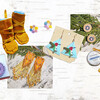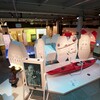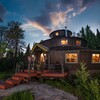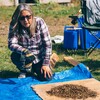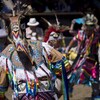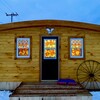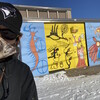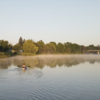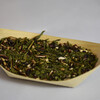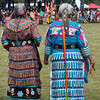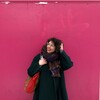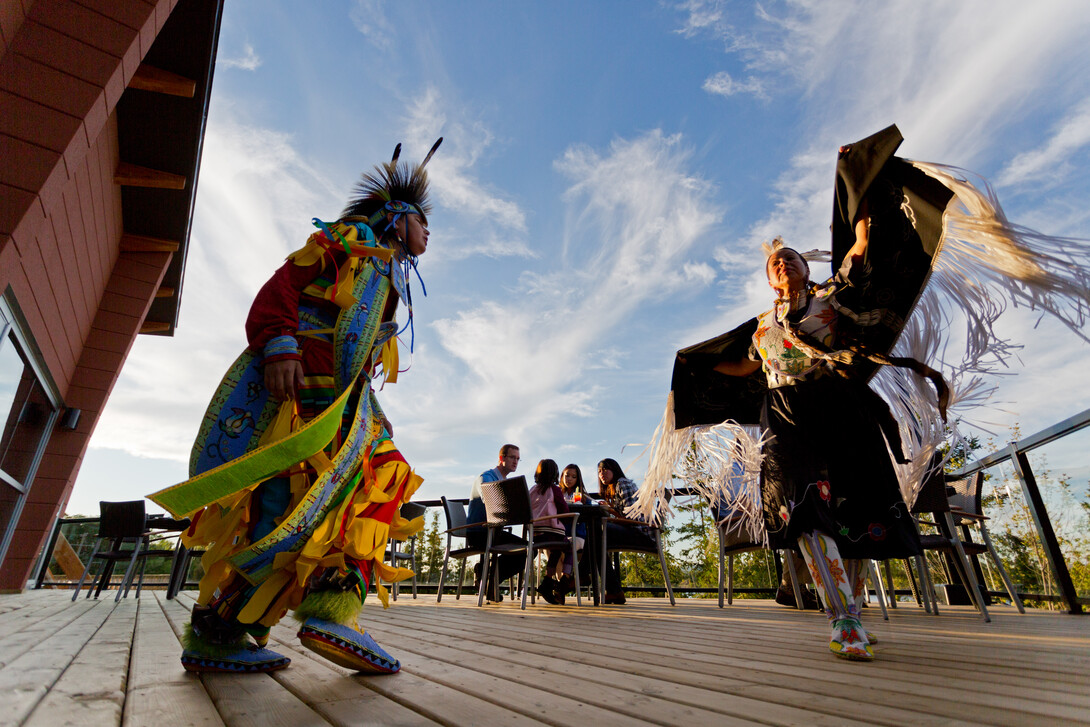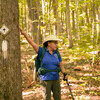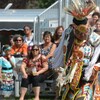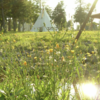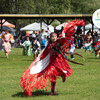
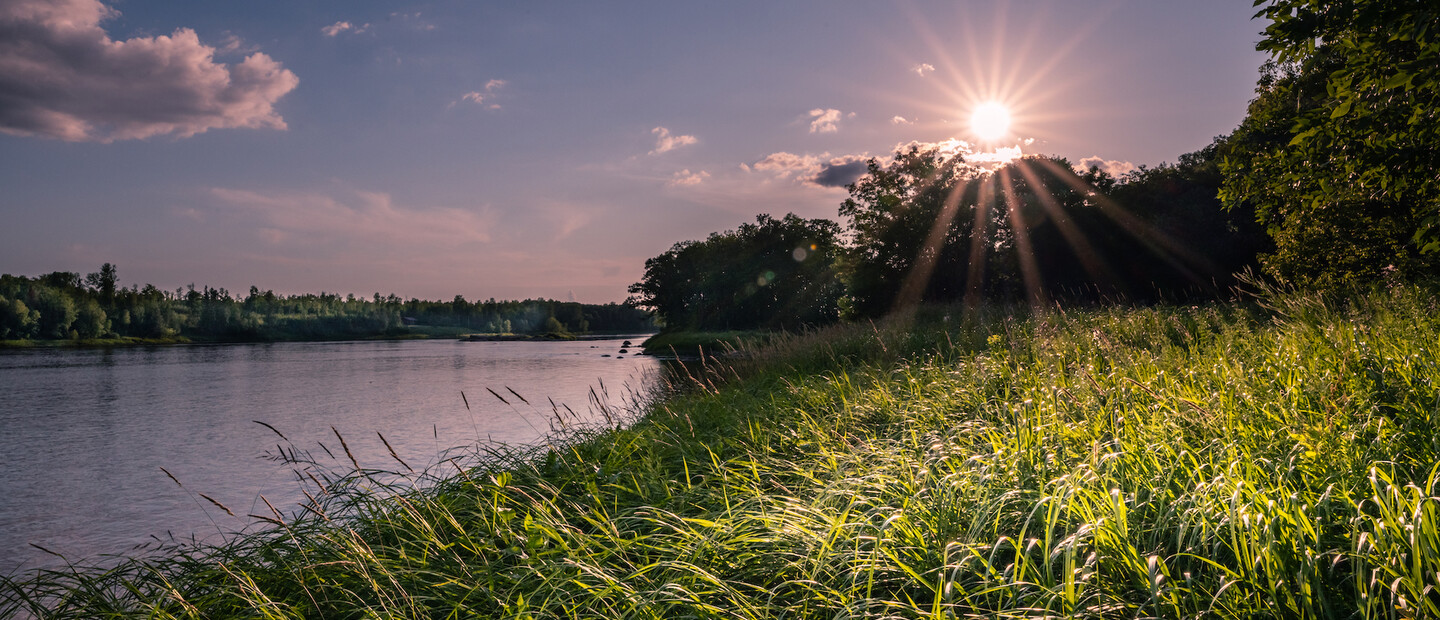
A Guide to Visiting the Kay-Nah-Chi-Wah-Nung Historical Centre
Kay-Nah-Chi-Wah-Nung, also known as the Manitou Mounds, is one of the most incredible tourist destinations—and, indeed, one of the most amazing places—in Ontario. Here's everything you need to know to visit.
There are many reasons to visit the Manitou Mounds, from learning more about Indigenous history in Canada to enjoying the incredible flora and fauna that surround the centre. Here’s an introductory guide to Kay-Nah-Chi-Wah-Nung, to prime you for your first visit.
The Mounds, located in Northwest Ontario near the Minnesota border, are under the stewardship of the Rainy River First Nations, and have strong historical and cultural significance to Indigenous peoples throughout North America, and is perhaps best known for having the largest concentration of Indigenous burial mounds on the continent. Currently, this award-winning museum and collections space house more than 16,000 artefacts. It was designated a National Historic Site of Canada in 1969.
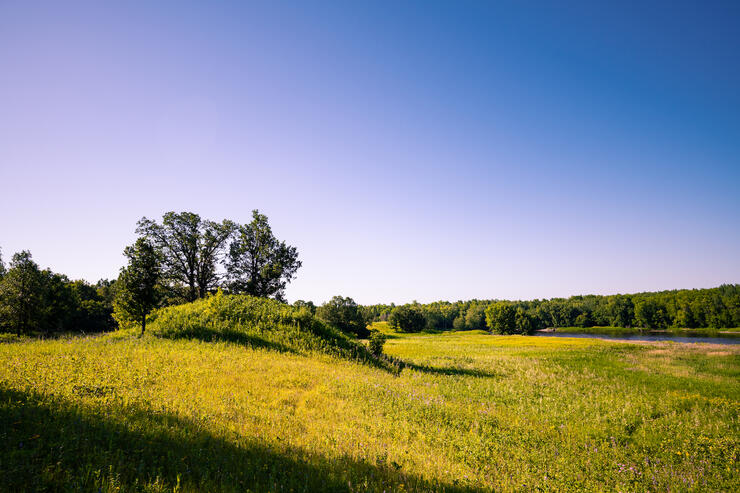
What are the Manitou Mounds?
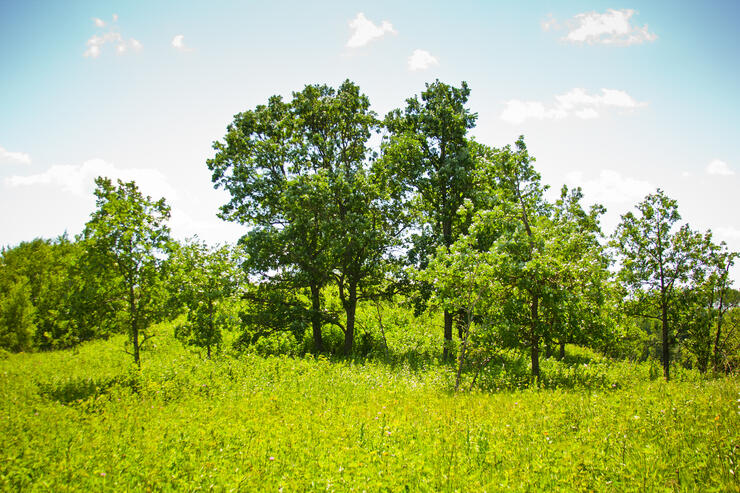
The Anishinaabeg of Rainy River First Nations are stewards of Kay-Nah-Chi-Wah-Nung, which means “the place of the Long Rapids.” Historically, the area’s Indigenous people have used the site as a burial ground — hence, the mounds: created by the inhabitants of the site between 800 and 2,000 years ago, these mounds were constructed by digging a shallow pit, where the remains of ancestors who had passed would be placed. These were then covered with earth and occasionally added to over time, sometimes over the course of centuries.
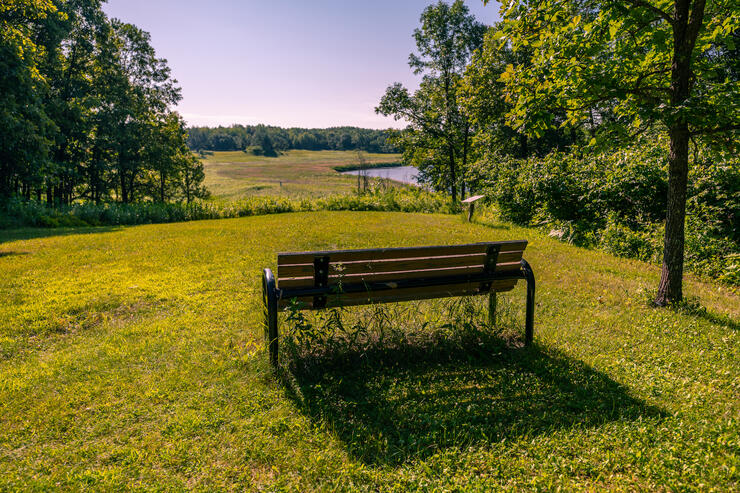
Today, the mounds range in size from 18-24 metres in diameter and up to 7 metres in height. In addition to serving as burial sites for ancestors, they also contain significant items to those who are buried within them, such as pipes, clay pots, and bags. Self-guided as well as guided tours are available.
How long has the area been inhabited?
There is evidence of human travel through the area as far back as 9,000 years ago, likely by pre-contact peoples who were tracking animals for food. Settlement in the area did not begin until between 800 and 2,000 years ago, when the Laurel Peoples followed by the Blackduck Peoples first began constructing burial mounds. Much of the history of the region has been learned through the discovery of pottery fragments in the area, some of which are on display at the Manitou Mounds Interpretive Centre.

Who operates the Manitou Mounds?
The Manitou Mounds are Indigenous owned and operated. The Rainy River First Nations currently run the centre; Rainy River First Nations is an Ojibway First Nation band government comprising seven historical bands.
What is there to see and do at the Manitou Mounds?
The Manitou Mounds offer an in-depth, comprehensive look at what life was like centuries ago for the Indigenous inhabitants of the Rainy River area, known to the region’s First Nations as “Manidoo Ziibi.” The galleries within the Interpretive Centre offer oral histories of the First Nations’ past, as well as information about trade, medicinal plants, and the importance of wild rice and sturgeon to the ancestors of Rainy River. The abundance of massive sturgeon in the nearby Long Sault Rapids is one of the reasons the area became an important gathering place.
The sturgeon themselves can be seen in the Manitou Mounds aquarium, which features fish that are caught and released back into the river seasonally. There is a restaurant onsite featuring locally-sourced offerings like wild rice and bannock.
Birdwatchers will enjoy taking to the trails surrounding the centre to catch a glimpse at the area’s dozens of species, which include pelicans, woodpeckers, and bald eagles. The centre’s website offers a guide to the medicinal plants that can be seen along the trails that surround the Manitou Mounds, so interested individuals can learn about the significance of the area’s fauna before embarking on a walk or hike.
With four kilometres of shoreline and ten kilometres of trails to explore, visitors can choose to walk or rent mountain bikes for the day. In the winter, the trails are open for snowshoeing or nordic skiing, with equipment available for rent as well.
Visitors to the site can opt to stay at one of the many lodges and hotels in nearby in Fort Frances, such as the popular Copper River Inn.
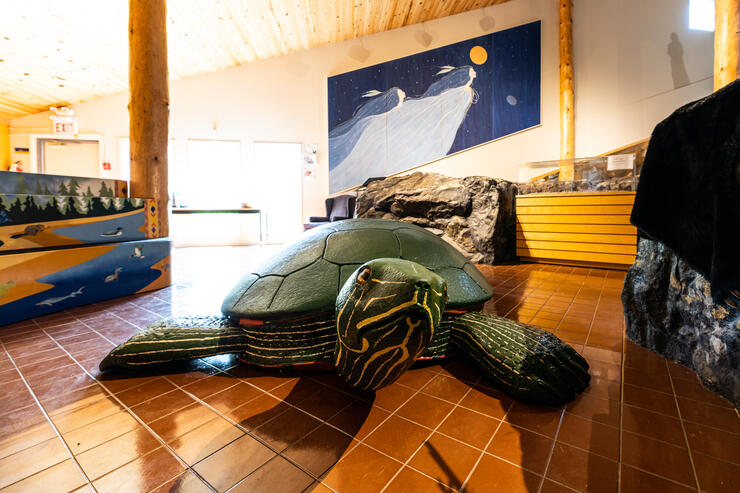
Where are the Manitou Mounds?
The site is located near the U.S. border in Stratton, Ontario, along the banks of the Rainy River, and near the town of Fort Frances. The Manitou Mounds are a 3.5-hour drive from Winnipeg, 4 hours from Duluth, Minnesota, and 4.5 hours from Thunder Bay. The Rainy River First Nations Elders maintain stewardship of the area’s wild landscape, which includes organizing a prescribed burn of the prairies each spring, to encourage the growth of rare plants and inhibit the growth of invasive species. The stewardship plan for Kay-Nah-Chi-Wah-Nung also includes monitoring the flora and fauna of the prairie and collecting information about native and invasive species, including wildlife.
When can I visit them?

While the site is usually open year-round, The Manitou Mounds’ buildings and visiting centres — including its restaurant and Interpretive centre — are open Wednesday to Sunday, 11am-6pm in the spring and summer.
For more information on planning a trip to the Manitou Mounds, see below. There is a gift shop and restaurant available to guests as well.
Visit: www.manitoumounds.com
Call: 1.807.483.1163
Email: mounds.rrfn@bellnet.ca
The Manitou Mounds historic site is located at: 340 Ross Road, Stratton, Ontario P0W 1N0
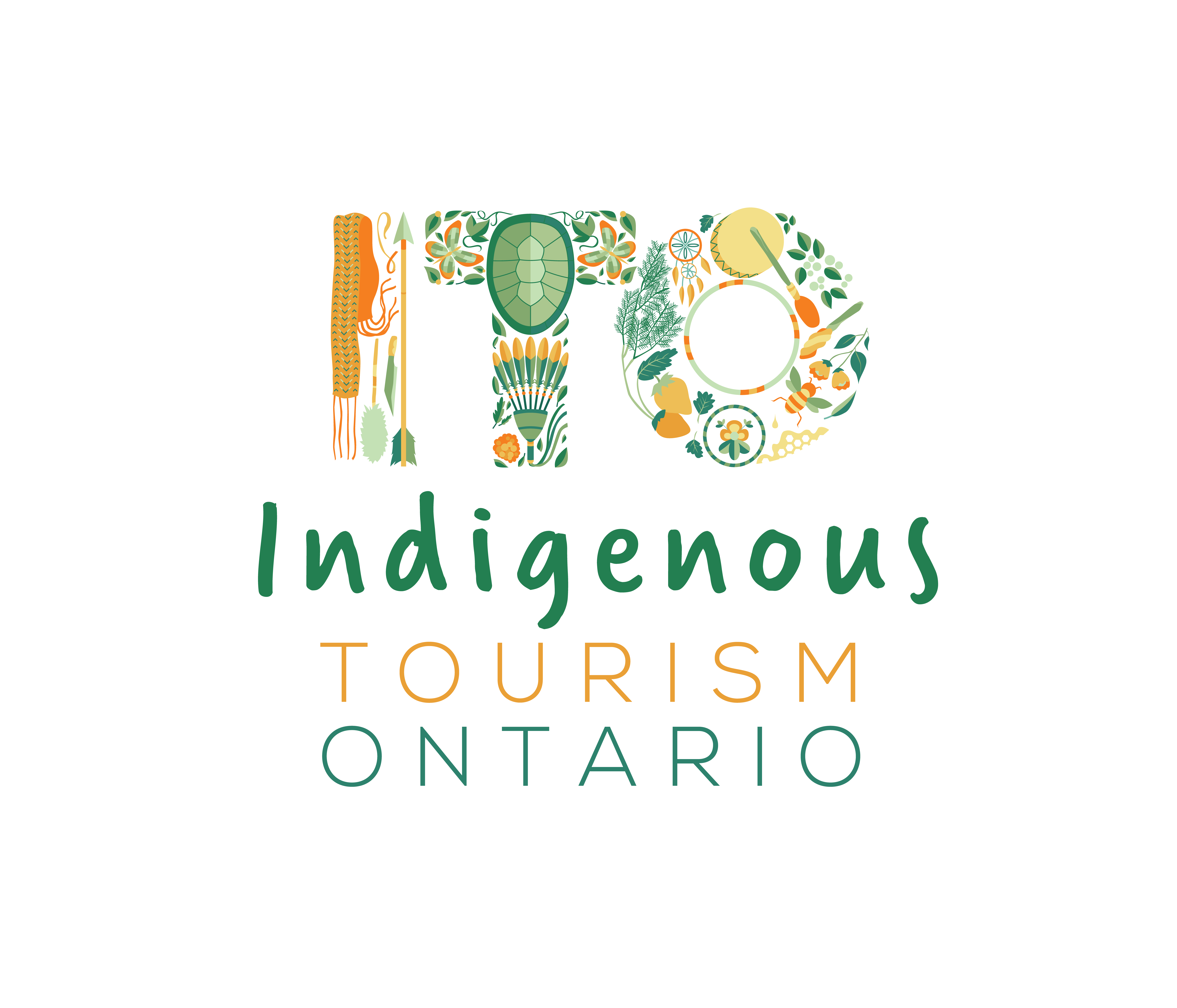
Recommended Articles

Ontario Pow Wow Calendar: 2025 Edition
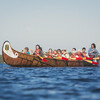
8 Indigenous Tourism Experiences To Book in 2025

Indigenous Restaurants in Ontario

8 Indigenous Experiences to Discover in North Bay
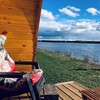
6 Indigenous-owned Accommodations in Ontario

7 Indigenous-Owned Fishing Experiences in Ontario
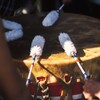
Pow Wow Road Trip 2024

11 Indigenous-Owned Outdoor Adventure Companies in Ontario
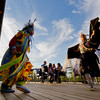
13 Indigenous-Owned Businesses to Visit on National Indigenous People's Day—and Every Day
Indigenous Theatre on Manitoulin Island
